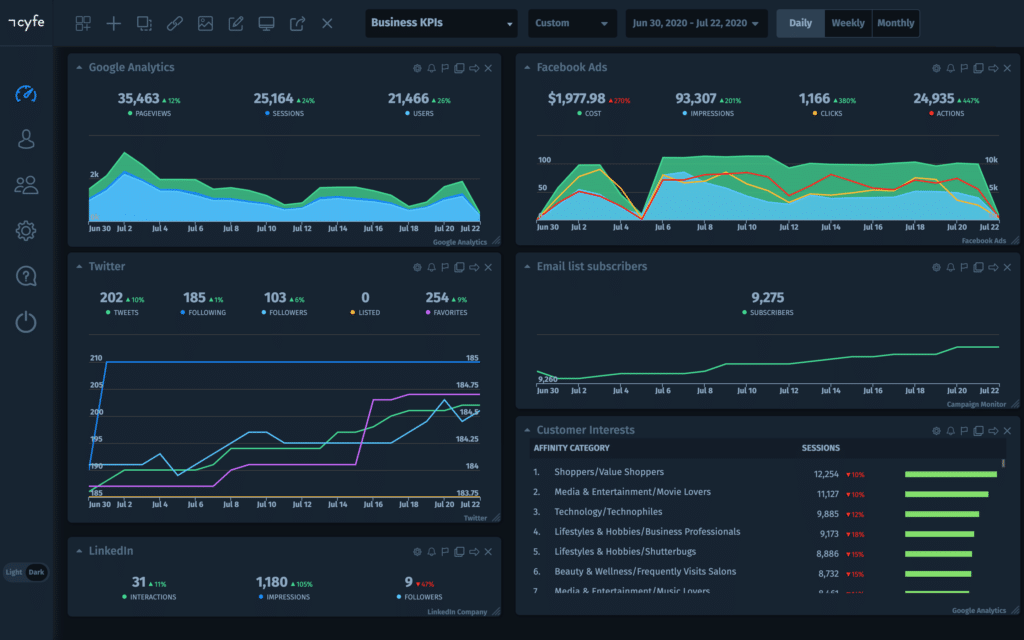Everyone talks about the value of building healthy client agency relationships. But how do you do that?
Trust.
Trust is one of the most critical building blocks of growing a successful agency long-term. And it’s fundamental for a healthy client agency relationship. Yet it’s one of the hardest things to build and the easiest to lose.
In this article, we’ll walk through four key ways in which you can build a trustworthy agency and retain clients for the long run.
Table of Contents
Four key ways to improve client agency relationships
1. Say what you mean, mean what you say
As kids, we learn to pick up on clues that someone isn’t telling the truth. Your parents threaten you to eat the broccoli, or you can’t leave the table, but they never follow through. Your sibling promises you they’ll share their Skittles with you, but they never do.
Because of this, we adjust our expectations and behaviors accordingly and learn not to trust the person next time to avoid a letdown.
In the marketing and advertising world, this translates to “under-promise, over-deliver”. As an agency, it’s imperative to set clear expectations with clients about your services.
For example, if your strategy takes time, let them know upfront.
“With every new client, be diligent about what you can and cannot deliver. But also ask what they expect. What kind of results are they looking for? What kind of service do they want? Getting crystal clear on your expectations upfront will mean better feedback, a better experience, and better results.”

Daniela Furtado, SEO Consultant at Findable Digital Marketing
Take time to sit down together and talk about the expectations of your agency relationship. Discuss the strategy, your process, and determine the right marketing KPIs to set yourself up for success. If you want to build a good relationship with your client, say what you mean and do what you say.
2. Be transparent
Transparency is the one thing that separates you from the competition. It’s a specific benefit that helps improve customer retention, even if it doesn’t always show your agency in the best light.
Being transparent eliminates anxieties or suspicions a client may have about the value you offer. When you lay out the truth about your services — including their limitations — you prove you are not trying to hide any shortcomings.
Transparency not only allows you to serve your current agency clients better but also attract new customers. A few ways you can maintain this level of openness with clients are:
- Ask about your client’s goals first, budget last. Transparency starts from your first discovery call. When starting the conversation, ask about your clients’ plans and goals. Listen to their problems first, speak second. Show you understand what they need, then discuss how you’ll help them solve their goals.
- Give your client a point of contact. Whether you’re a solo-prenuer or seven-person team, give your client someone to reach out to agency-side who’s working on their campaigns.
- Respond to questions fast. Don’t take too long to respond to client inquiries. If it’s a simple request, respond as soon as you can. If it’s a more complicated matter, respond and let them know you’ll get back to them with an answer soon. Make your clients feel like they’re on the top of your priority list.
- Give access to files and tools. Let clients freely access shared workspaces and project management tools. Don’t let them guess the status of a project or jump through hoops to find their files.
- Hold regular reviews. Start a weekly or bi-weekly review process for you and the client to catch up. You can identify any weak spots or issues that need to be fixed. Gather feedback, or even catch up about a personal matter.
- Share data openly. Frequently communicate metrics with your clients. You can set up a data dashboard where clients can see progress, and send automated email updates to keep stakeholders in the loop.
“The best results I’ve had with clients come from maintaining total transparency with our clients. I explain that our services take some time, but it will be worth it. Every month I send over an analytics report to each client, outlining exactly what worked and what didn’t. The more open, honest, and full disclosure I am with our clients the more comfortable they are to ask questions and work together.”

Tricia Moceo, Head Marketing Strategist at Stodzy Internet Marketing
3. Decide on a client approval process
As a marketer, you know how important it is to get client approval throughout the creative process. Approval processes are a workflow where any project step— from briefing to completion — is approved by your client the same way every time.
There are many different actions to prioritize in your process, so consider what’s most valuable to your client’s business and make room for that.
Here are some approaches you can take with your process:
- Consider how work should be submitted. The first step to a good client approval process is how you will submit the work. Are you using email or a collaboration tool like Monday? To whom are you presenting the work? How are the changes being requested? When you decide how to manage and approve tasks, you can set the foundation for more successful campaigns.
- Only include critical steps. Take a look at your internal approval process and see what you can cut out. Unnecessary approvals slow down projects. Identify what criteria is necessary with your client to move on to the next phase of the project.
- Know what happens after approval (or rejection). Both you and your client need to know what happens after approvals or rejections, and how it fits into the greater project. You can set up a notification system when tasks are decided on to keep everyone in the loop about where to go next.
Considering that only 54 percent of clients agree that the standard approval process works well, getting it right can create a great relationship and improve retention rates. Remember that every approval process is different for each agency. With these approaches, you can build a foundation for approvals where the decision-making process is painless, everyone is accountable, and better work gets done.
4. Keep open communication between your agency and client
One of the most significant issues between agency and client is lack of communication. Many agencies struggle with over or under-communicating with a client. Your goal is to ensure clients don’t feel confused or ignored on the status of their marketing or advertising campaign.
Sometimes clients have their own objectives and responsibilities to tackle — may it be events, trade shows, blogging, etc. — so they aren’t always available for talks.
But if they have unmet expectations from your agency, the relationship can become hard to manage. That’s why it’s essential to communicate important information, fast, so everyone is on the same page.
That’s where a client communication dashboard comes in. You can answer stakeholder questions quickly with little interruption.

When creating a client communication dashboard, be sure to clearly show:
- The current status of the work in progress
- How your agency is adding value to client’s business day-to-day
- What aspects of the campaign should be prioritized week by week
It’s gaps in the above factors that clutter every meeting, slow down the progress of projects, and causes confusion between client, teams, and your agency. When you give clients this visibility through a dashboard, you can show the business impact your agency provides and how it gets done.
Building long-lasting client agency relationships
Whether you’re a digital marketing firm or ad agency, maintaining client relationships can be challenging. But it definitely pays off to take a reasonable approach to them and follow best practices.
Think of it as a domino effect: the better your partnership, the better your campaign, the better the results, the more sales you make.
These four key tips above will take you no time to implement once you’ve done it a few times with clients.



